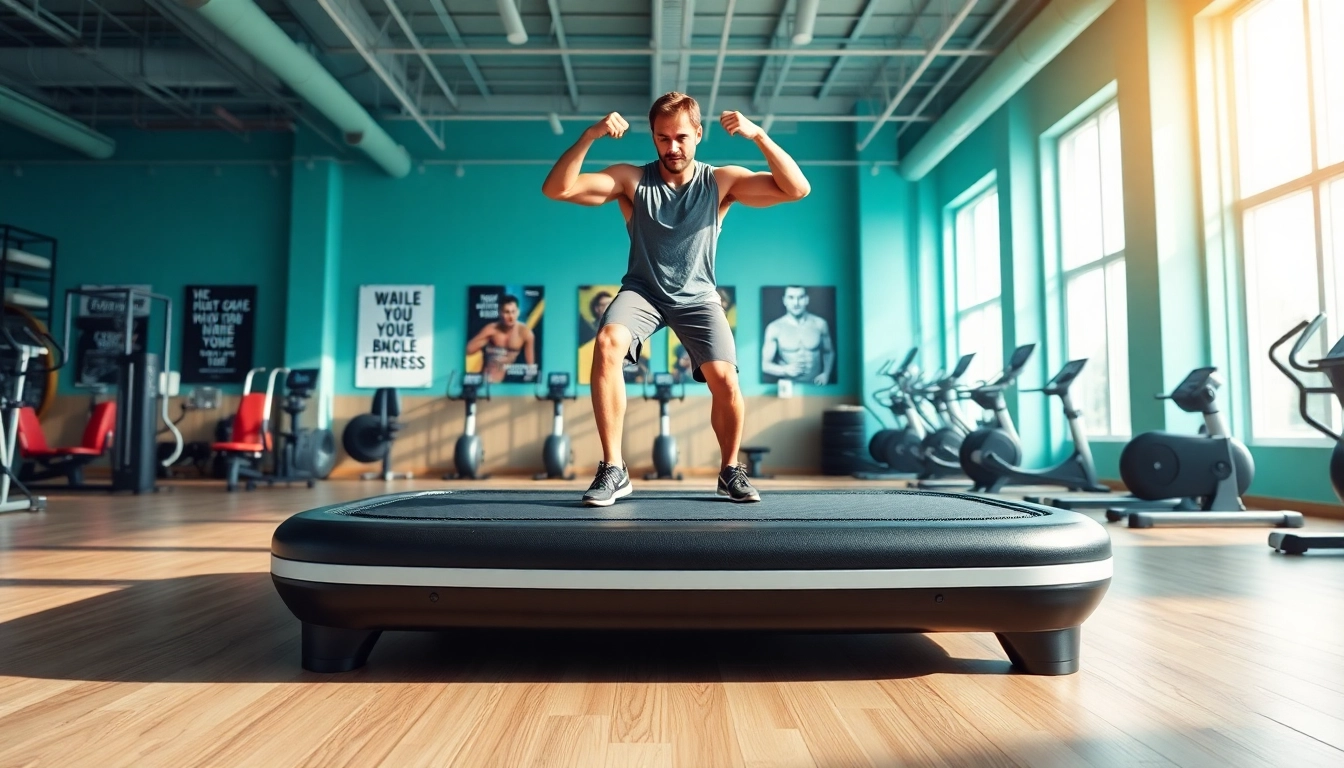Understanding Whole Body Vibration Therapy
What is Whole Body Vibration Therapy?
Whole body vibration therapy is a form of exercise that uses high-frequency vibrations to stimulate the body’s muscles and cells. Participants either stand, sit, or lie on a vibrating platform that transmits energy to the body, resulting in rapid muscle contractions. This therapy is thought to provide a variety of health benefits, including improved muscle strength, enhanced flexibility, and increased circulation. Whole body vibration therapy is increasingly popular in fitness circles and is also used in physical rehabilitation settings.
How Whole Body Vibration Therapy Works
The mechanics behind whole body vibration therapy are relatively straightforward. As users engage with the vibrating platform, their muscles reflexively contract and relax in response to the vibrations. In a typical session, the vibrations can occur at frequencies ranging from 30 Hz to 50 Hz, leading to multiple muscle contractions per second. This passive exercise mimics the effects of more traditional workouts but can often be completed in a much shorter period.
Physiological Benefits of Whole Body Vibration Therapy
The physiological benefits of whole body vibration therapy are wide-ranging. Research has indicated that this therapy can lead to significant improvements in muscle strength and tone. Additionally, studies suggest that it may benefit bone density, making it a viable option for those seeking to combat osteoporosis. Improved circulation from whole body vibration therapy may also enhance metabolism, aiding in weight management efforts. Furthermore, preliminary findings suggest potential improvements in coordination and balance, particularly in older adults, thereby reducing the risk of falls.
Applications and Uses of Whole Body Vibration Therapy
Sports Performance and Training
Whole body vibration therapy is gaining traction among athletes and trainers for its potential to enhance performance. Incorporating this therapy into a training regimen can help athletes recover quicker and improve strength levels. The stimulation effects on the muscles during whole body vibration can lead to improved athletic capabilities and reduced injury rates when employed as part of a broader training program.
Rehabilitation and Recovery
In rehabilitation settings, whole body vibration therapy is often utilized to accelerate recovery from injuries. The enhanced blood flow produced during vibration sessions can promote healing in damaged tissues. Moreover, the gentle movements prompted by the vibrations can help maintain muscle mass and functional mobility in patients with limited movement capabilities. Rehabilitation professionals typically integrate whole body vibration therapy as part of a comprehensive program tailored to individual recovery needs.
Enhancing Overall Wellness
Beyond athletic performance and rehabilitation, whole body vibration therapy can play a role in enhancing overall wellness. Many practitioners report improvements in mental health, as the therapy encourages deeper relaxation and reduced stress levels. Additionally, whole body vibration therapy can aid in reducing muscle tension, promoting a comforting sense of well-being. This making it a popular choice for wellness programs seeking holistic health options.
Safety Considerations in Whole Body Vibration Therapy
Identifying Risks and Contraindications
While generally considered safe for many individuals, it’s crucial to recognize that whole body vibration therapy may not be suitable for everyone. Certain contraindications include pregnancy, recent surgeries, and specific cardiovascular conditions. Individuals with joint problems or acute inflammation should also approach this therapy cautiously. Consulting a healthcare provider before engaging in whole body vibration therapy is highly advisable to avoid any adverse effects.
Recommendations for Safe Practice
Ensuring safety during whole body vibration therapy involves adhering to proper usage guidelines. Users should always start with short sessions, gradually increasing their exposure as they become accustomed to the vibrations. It’s also vital to maintain proper posture throughout each session to prevent strain. Users are encouraged to hydrate adequately before and after therapy and to coordinate with professional guidance when initially exploring this form of treatment.
Monitoring Progress and Effects
Tracking progress is an essential component of whole body vibration therapy. Users should pay close attention to how their bodies respond, noting any improvements in strength, balance, or overall wellness. Keeping a journal can help individuals monitor changes over time, ensuring that they derive maximum benefit and adjust their practices as needed. Regular assessments with a healthcare practitioner can further solidify a program’s effectiveness.
Combining Whole Body Vibration Therapy with Other Treatments
Integrative Approaches for Maximum Benefit
Integrating whole body vibration therapy with other treatments can enhance its effectiveness. For instance, combining it with flexibility exercises can lead to improved results in mobility and muscle relaxation. Additionally, it can be paired with various forms of therapy such as chiropractic adjustments or massage to further relieve tension in muscles and joints.
Physical Therapy and Wellness Regimens
Physical therapists often incorporate whole body vibration therapy into existing rehabilitation protocols to optimize patient outcomes. Working synergistically with exercises tailored to individual recovery plans, the therapy can facilitate quicker recovery times by enhancing muscle activation and circulation. Patients participating in physical therapy can leverage whole body vibration to enhance their rehabilitation journey.
Nutritional Support for Enhanced Results
Nourishing the body appropriately can further amplify the benefits of whole body vibration therapy. A balanced diet rich in essential nutrients can enhance muscle recovery and overall wellness. Incorporating protein-rich foods can aid in muscle regeneration, while antioxidants found in fruits and vegetables can reduce inflammation. A holistic wellness strategy that combines nutrition, therapy, and exercise will yield the best results.
Future Directions in Whole Body Vibration Therapy Research
Emerging Studies and Findings
Research into whole body vibration therapy is continuously evolving. Recent studies have begun to explore its potential benefits on cognitive function and mental health, suggesting positive implications for stress reduction and mood improvement. As scientific understanding deepens, future research may uncover even more applications of whole body vibration therapy across various demographics.
Innovations in Equipment and Techniques
The technology behind whole body vibration therapy is also progressing, with new devices and techniques being developed. Future machines may feature enhanced capability to tailor vibrations to individual users based on their specific health profiles and goals, ultimately leading to more personalized therapy experiences. Innovations may also include improvements in user interfaces, making the therapy more accessible.
Potential for Expanded Applications
The potential applications for whole body vibration therapy continue to broaden. With growing interest from healthcare practitioners, its use may extend into psychological therapies and geriatric care, targeting improved quality of life for older adults. As research progresses, this modality could become a standard recommendation for various health and wellness programs aimed at enhancing overall vitality.



